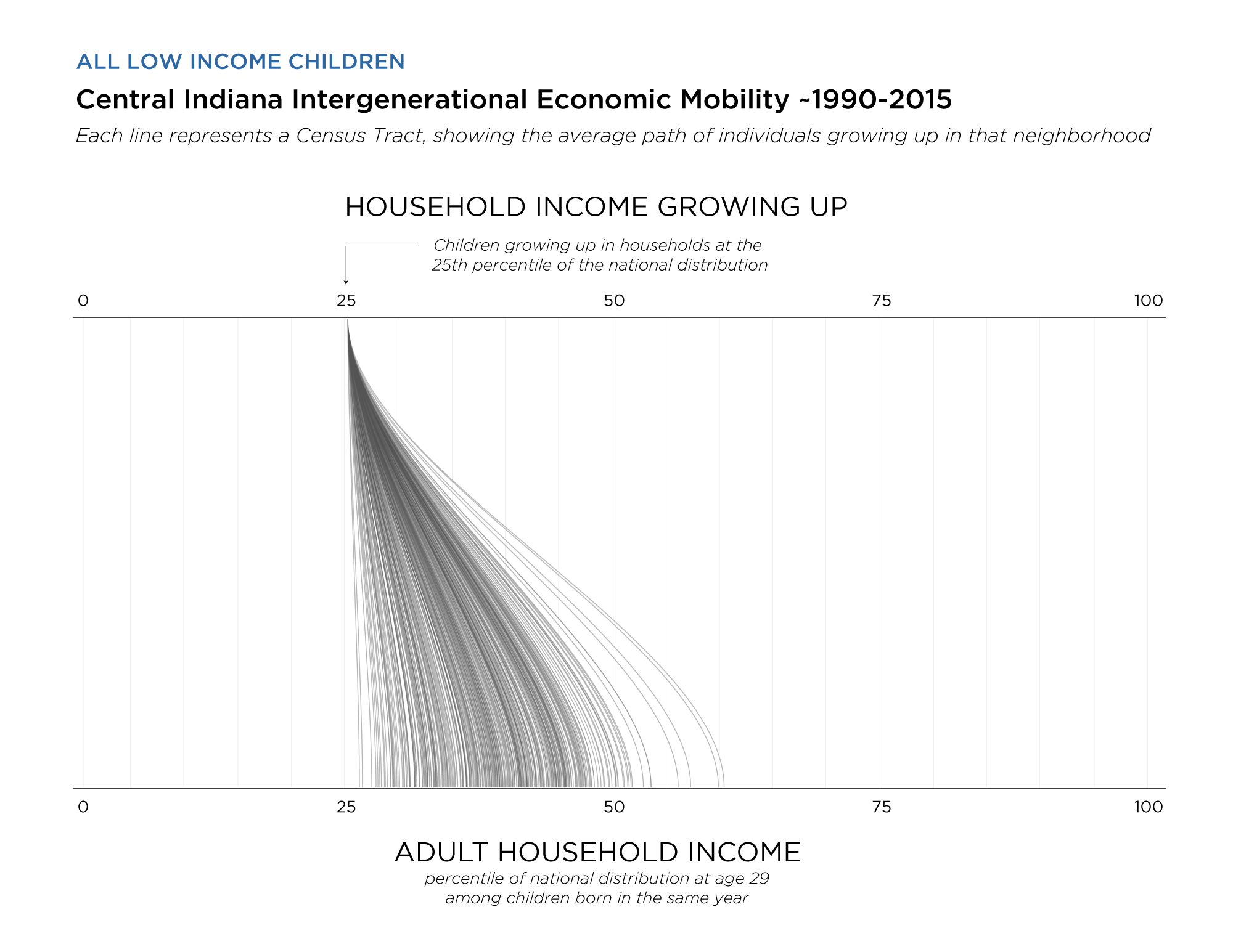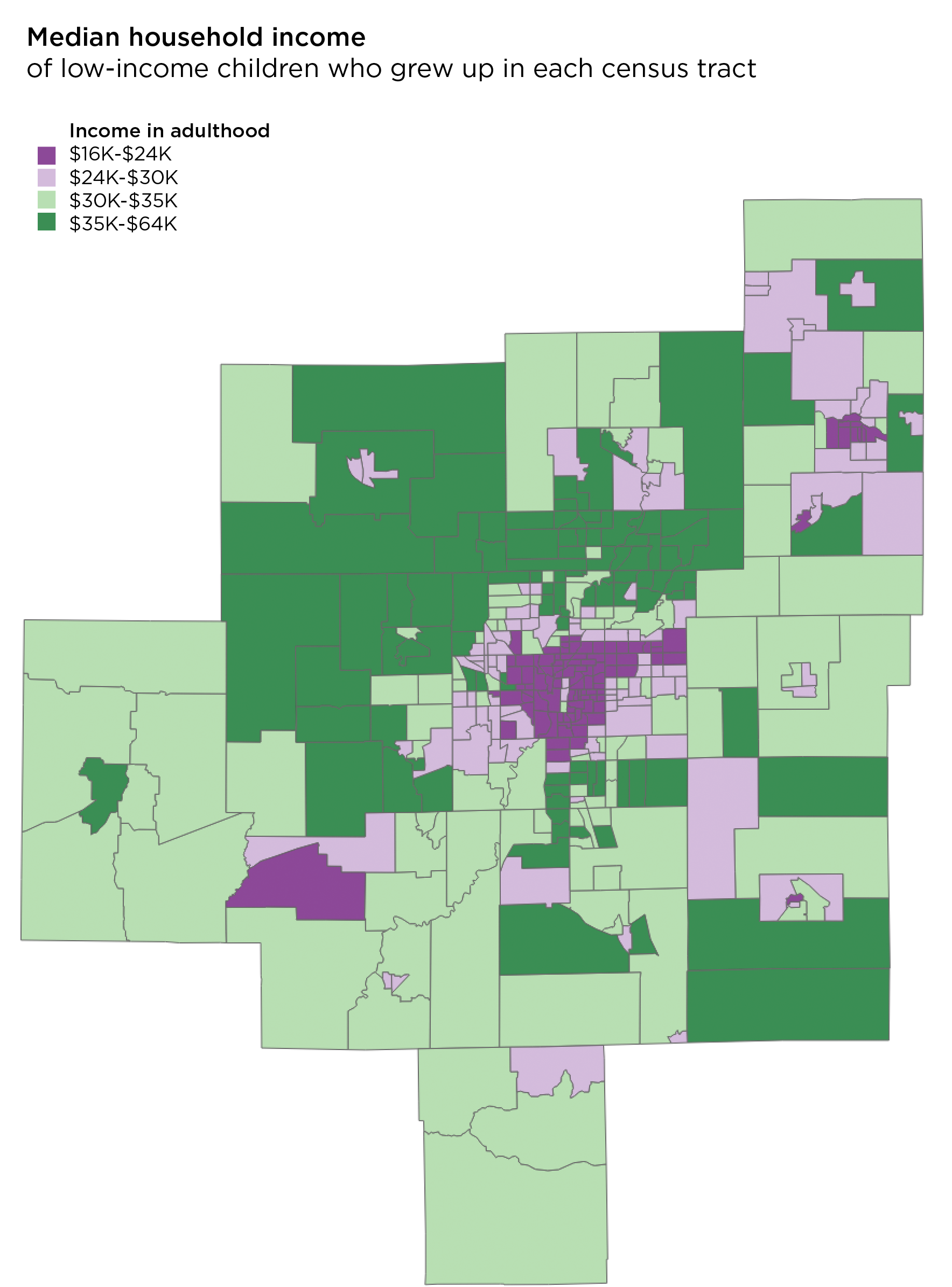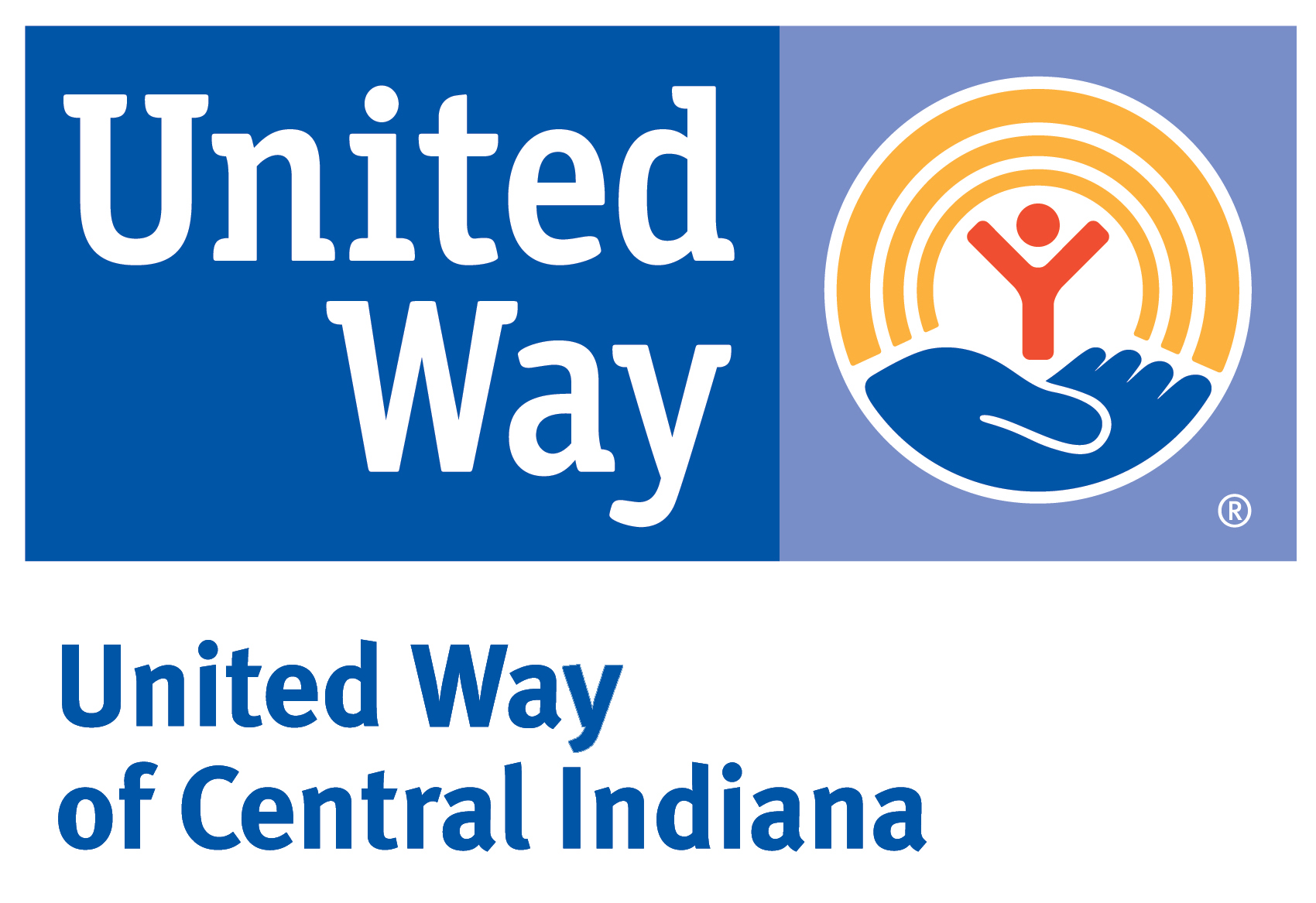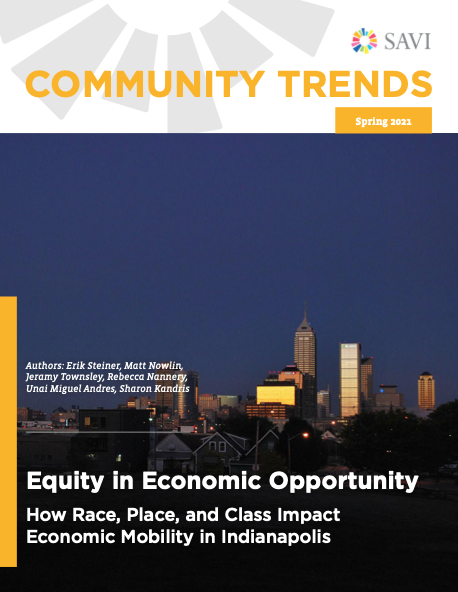Equity in Economic Opportunity
SAVI Talks - March 25, 2021Building on research by Harvard’s Raj Chetty and his team, we are developing new insights and highlighting findings about opportunity in Indianapolis neighborhoods. The average child born into a high-income family in Indianapolis earned $50,000 in household income when they were about 35. Children born to low-income families grew up to earn $27,000.
- Indianapolis’ level of opportunity for low-income children is lower than all but two of the largest U.S. cities. Only Atlanta and Charlotte have worse outcomes than Indianapolis.
- The average Black child born in Indianapolis earns $9,000 less than the average White child. There is a spatial disparity too: In many neighborhoods, children who grew up there earn less than $20,000 per year. In other neighborhoods, children born at the same income level grow up to earn $35,000 or more.
- Neighborhoods that are segregated clearly have lower opportunity outcomes for children. People born into Redlined neighborhoods have less economic opportunity, even when controlling for their parents’ income.


Articles and Story Maps
Explore other research and interactive content we have developed around equity.
Turnout, Absentee Ballots Up In Primary Election
Voter turnout was up 46 percent compared to the last midterm primary, a return to typical turnout levels. This year, more absentee ballots were cast than ever, making up of a fifth of all votes.
Changes in Indy’s Historic Black Neighborhoods
In the 1970s, 4,000 residents left this nearly all-black neighborhood. Why? An increasingly desegregated housing market and closure of one of the country’s first public housing projects.
Neighborhood Change 1970-2016
From 1970 to 2016, the forces of suburbanization and white flight, followed by the ensuing forces of urbanization, have significantly changed neighborhoods across the Indianapolis region. White, educated, and middle- to upper-income households left the core of...
Story Map: Moving Out – Suburbanization Since 1970
Indianapolis and Anderson were the region’s urban centers in 1970. Three-quarters of the population lived in those counties. Now, just over half the population live there, and Hamilton County is the second largest urban center.
Story Map: Race and Migration Since 1970
In 1970, half of the region’s Black population lived in 12 square miles north of downtown Indianapolis. As Black residents moved into ’60s suburban communities, 120,000 White residents left the city’s core for newer suburbs.
Are We Segregated by Educational Attainment?
Most neighborhoods match the educational diversity of our region, but those with less education are largely excluded from downtown and the northern suburbs, while they are relatively isolated in the southeast side and parts of Anderson.
2016 Population Growth in Indianapolis, Central Indiana
The region grew by 1 percent to 1.97 million residents in 2016 driven by 2 percent growth in suburban counties and growing Black, Asian, and Hispanic populations in Marion County.
Domestic Violence in Marion County
This report summarizes the state of domestic violence in Marion County in 2016, andpresents trends in the data between 2009 and 2016. It builds upon the 2013 feasibility study and 2014 update conducted by the Polis Center at IUPUI in partnership with the Domestic...
Reported Domestic Violence Victims Declining, but Most Cases Are Dropped or Dismissed
The number of domestic violence victims appears to be declining, but most cases are not reported and most reported cases have charges dropped or dismissed.
Local Industries Could Be Affected by Steel Tariffs
News of potential steel tariffs is particularly relevant to Indiana, where the manufacturing and shipment of steel plays a significant role in our economy. In June 2017, an estimated 40,732 Indiana workers were employed in primary metals manufacturing, which includes...
Authors
Sharon Kandris
Associate Director,
The Polis Center
Jay Colbert,
Data Manager,
The Polis Center
Jeramy Townsley,
Visiting Research Analyst,
The Polis Center
Matt Nowlin,
Research Analyst,
The Polis Center
SAVI Talks Panelists
Patrice Duckett
Exec. Director
Fay Biccard Glick Crooked Creek Neighborhood Center
Amy Nelson
Exec. Director
Fair Housing Center of Central Indiana
Pamela Ross
VP of Opportunity, Equity & Inclusion
Central Indiana Community Foundation
SAVI Talks Moderator
Jill Sheridan
Health & Science Reporter
Indiana Public Broadcasting, WFYI
Event Partners





